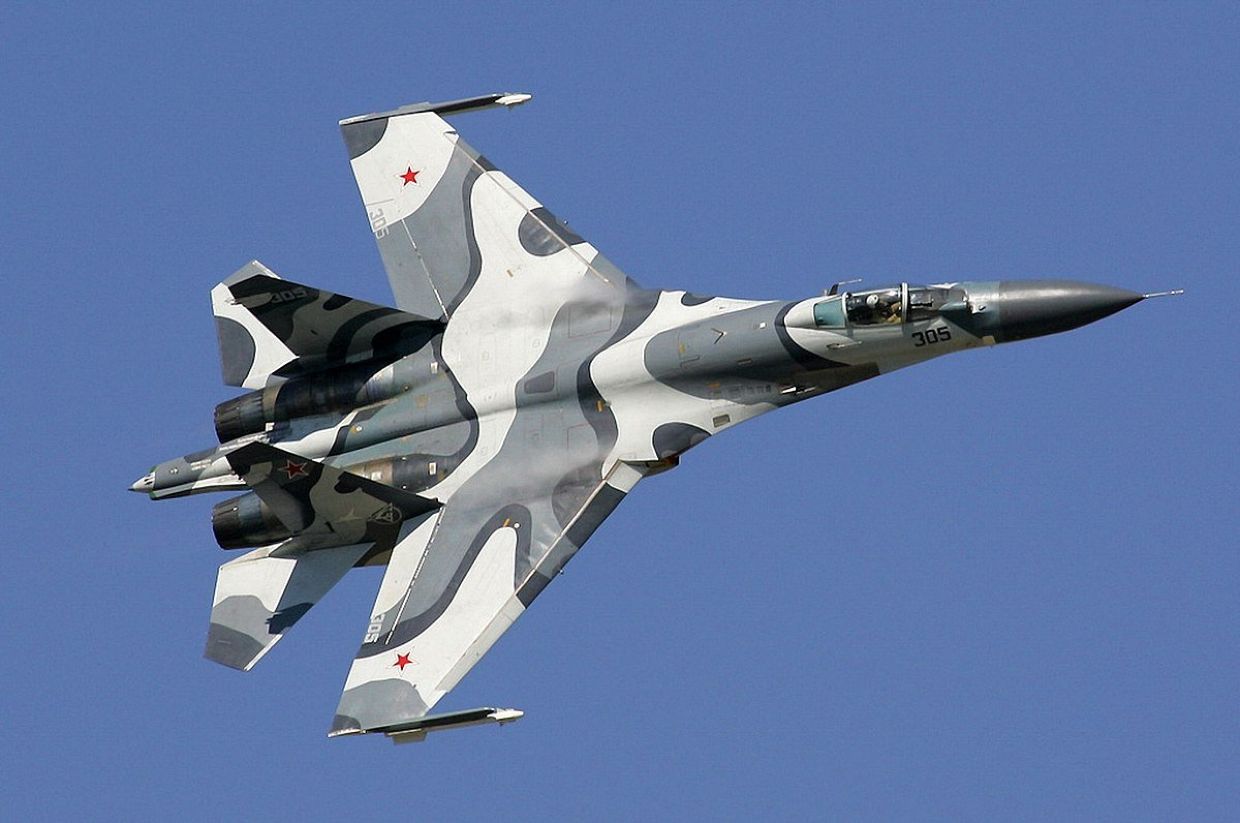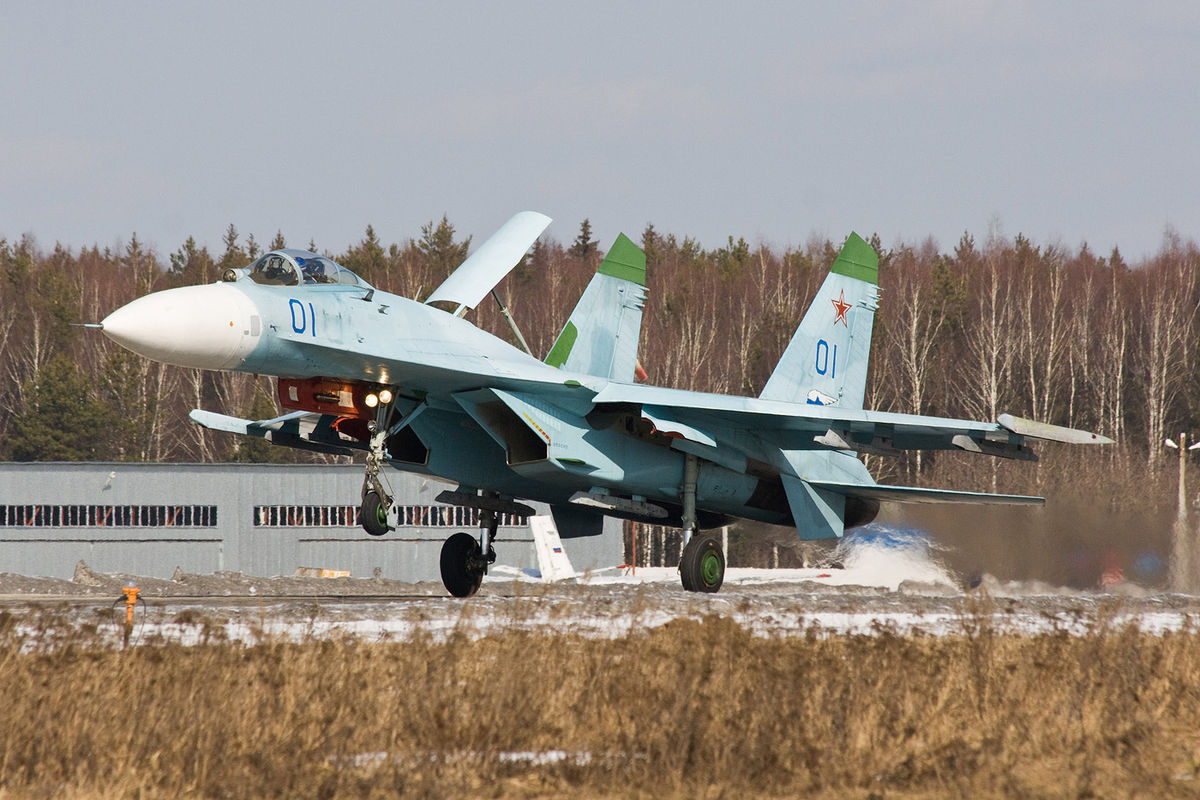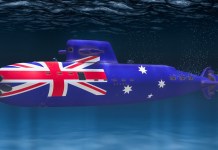The Pentagon has released a video of the US drone incident over the Black Sea. The footage released by US European Command shows the encounter between a US MQ-9 Reaper drone and a Russian Su-27 fighter jet over the Black Sea.
BREAKING- US Releases Footage of Clash between Russian Su-27 Fighter Jet and the US MQ-9 Reaper Drone.
The Russian Su-27 can be seen attempting to spray fuel on the Drone. #BlackSea #NATO #USAirforce #Ukraine #MQ9 #Drone #Russia pic.twitter.com/v7clC3oHbw
— EurAsian Times (@THEEURASIATIMES) March 16, 2023
The video was captured from a camera on the drone’s underside and shows two different passes by the Su-27 fighter to spray the drone. The second one being the collision with the Reaper’s propeller, clearly visible in the footage.
Communication was lost with the drone as the image can be seen pixelating into color bars. EUCOM also confirmed that communications with the drone were lost for a minute and that the released video was edited for time.
When the video feed restarted, one of the propellers can be seen damaged. According to an expert taking to the EurAsian Times, it appears that the Russian pilot had orders from the ‘highest level’ to harass the US aircraft.
Notorious Su-27
Earlier on October 20, UK Defense Secretary Ben Wallace spoke to Russian Defense Minister Sergey Shoigu about an incident over the Black Sea in which a Russian Su-27 flanker launched a missile at a British RC-135 reconnaissance aircraft that was flying in international territory.
On September 29, the UK Defense chief disclosed that an unarmed RAF RC-135 Rivet Joint surveillance aircraft was intercepted by two armed Russian Su-27 fighter aircraft while on routine patrol over the Black Sea.
Wallace told British legislators, “it is not unusual for aircraft to be shadowed, and this day was no different.” However, one of the Russian planes “released a missile in the vicinity of the Rivet Joint beyond visual range.”
He stated that the engagement between the aircraft lasted approximately 90 minutes, after which “the patrol was completed, and the aircraft returned to base.” The UK defense minister stated to have spoken with his Russian counterpart Shoigu directly about the air incident.
Wallace stated that, given this potentially dangerous engagement, he had spoken with his Russian counterpart and the head of the Russian general staff, Valery Gerasimov, in Moscow.
In his letter, he made it plain that the aircraft was unarmed, flying in international airspace and adhering to a flight path that had been previously announced.
But no specifics about the missile’s nature were provided. Su-27s are typically outfitted with a medium/extended-range R-27 (AA-10 Alamo) family with semi-active radar or infrared guidance and a short-range R-73 (AA-11 Archer) with infrared seeker.

According to the head of British defense, UK patrols over the Black Sea were put on hold until the Russian side responded on October 10. Since then, RC-135W aircraft resumed their regular flights with Typhoon fighter escorts.
Wallace stated that an examination determined that a “technical malfunction caused the missile’s release.” According to British media outlets, Moscow acknowledged that the incident occurred in international airspace.
“We welcome Russia’s acknowledgment that this was in international airspace. The UK has conducted regular sorties with the RAF Rivet Joint in international airspace over the Black Sea since 2019, and we will continue to do so,” the minister said.
According to Luke Pollard, shadow defense minister for the opposition Labor Party, the incident was a harsh reminder of the necessity of avoiding escalation and miscalculation while maintaining the UK’s unwavering support for Ukraine.
The Russian side, however, has not yet made any remarks regarding the Black Sea air incident.
Su-27 Flanker
The Russian Su-27 Flanker is a fourth-generation fighter aircraft primarily created to outperform the American heavyweight F-15 Eagle fighter jet. The Su-27 was put into service in 1985.
The jet went on to become one of the most effective Soviet fighter designs of the late Cold War era. Four years after entering service, the Flanker made its debut at the 1989 Paris Air Show.

The Flanker can go up to Mach 2.35 and has an operational range of about 3,500 km, owing to its two Saturn AL-31F after-burning turbofan engines. The Flanker has twelve hardpoints and a payload capacity of up to 6,000 kilograms.
In addition to being relatively maneuverable, the Flanker is equipped with Vympel R-27 medium-range and R-73 short-range air-to-air missiles, making it perfect for dog fights.
The Su-27 is categorized as an air superiority fighter but is also capable of carrying out strike missions. It is equipped with S-8/13/25 series rockets as well as FAB and RBK bombs for this purpose.
The Flanker wasn’t initially designed for that job, but its adaptability and strong performance prowess helped it become an export success. Vietnam, Indonesia, Ethiopia, Angola, Kazakhstan, and Mongolia purchased the Su-27, and nearly all of these nations still operate it in different numbers.
However, Moscow now plans to eventually switch to the new Su-57 fifth-generation fighter in place of its outdated Su-27 and MiG-29 models. But, it might take many more years before the Su-57 is built in sufficient numbers.
- Contact the author at ashishmichel (at) gmail.com
- Follow EurAsian Times on Google News




